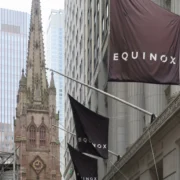Consumers Unfazed by Cost of Weight Loss Meds, Yet Overpaying

GoodRx says Americans overpaid on GLP-1s by $200 million this year
Despite barriers like limited insurance coverage and high out-of-pocket costs, consumers are embracing weight-loss medications such as Ozempic and Wegovy, with some drugs seeing fills more than double in the past year, according to recent findings from GoodRx.
The blockbuster medications – which have impacted everything from food, telehealth services offering compounded alternatives and muscle mass-supporting fitness regimens — show no signs of slowing down. Fueling demand is the fact that nearly half of U.S. adults (45%) in 2023 revealed they’d be interested in taking weight loss medications, according to a KFF poll.
GoodRx’s newly released data highlights the gap between consumer interest in taking the popular drugs and affordability, but presents a pathway that Americans can take in saving money.
Here are some key takeaways from the prescription savings platform’s new findings:
- Fills for Wegovy and Zepbound have risen by over 100% and 300%, respectively, since the start of 2024.
- GoodRx found some regional trends emerging regarding the popularity of weight-loss medications. According to the cost-savings platform, prescriptions for Type 2 diabetes drugs like Ozempic, Mounjaro, and Victoza are higher in Southern states such as Oklahoma, Alabama, Louisiana and Texas.
- In the Northeast, states like Massachusetts, New Jersey, Rhode Island and Delaware lead in fill rates for medications specifically prescribed for weight loss, like Wegovy, Zepbound, Saxenda, Qsymia and phentermine. Topping all states is Alaska, which has the highest combined fill rate for weight-loss medications in the U.S., according to the prescription savings platform.
- Despite the popularity of weight-loss medications, commercial insurance providers offer limited coverage for Americans. According to GoodRx, only 26% of individuals with commercial insurance have unrestricted access to Ozempic, while 71% face additional requirements such as prior authorization or step therapy. The findings also show that 18% of those with commercial insurance have no coverage at all for at least one brand-name GIP and GLP-1 agonist specified for weight loss.
- Lastly, Americans have overspent by at least $200 million in the past year by paying full price for GIP and GLP-1 medications. However, the platform reports that individuals without insurance can save an average of $250 per month by using GoodRx.
“GLP-1 and GIP medications have proven extremely effective in helping reduce and manage weight in overweight individuals, yet many health insurance plans lack necessary coverage and create cost barriers for many people in need,” GoodRx director of research Tori Marsh said. “Our latest findings reveal that Americans overspent by hundreds of millions on these essential treatments in 2024 alone. At GoodRx, we’re committed to bridging this gap by offering significant savings, ensuring that more people can afford their necessary medications.”
Courtney Rehfeldt has worked in the broadcasting media industry since 2007 and has freelanced since 2012. Her work has been featured in Age of Awareness, Times Beacon Record, The New York Times, and she has an upcoming piece in Slate. She studied yoga & meditation under Beryl Bender Birch at The Hard & The Soft Yoga Institute. She enjoys hiking, being outdoors, and is an avid reader. Courtney has a BA in Media & Communications studies.



